Should you desire a thriving and attractive olive tree in your garden, mastering the correct pruning techniques is absolutely essential.
Learning various techniques, and employing suitable tools for trimming at the ideal time, are factors in keeping an olive tree beautiful and healthy.
It’s also important to note that there are ideal times throughout the year based on age or seasonal climate considerations when approaching pruning methods1 should be employed.
What we cover
TogglePruning techniques for healthy olive trees
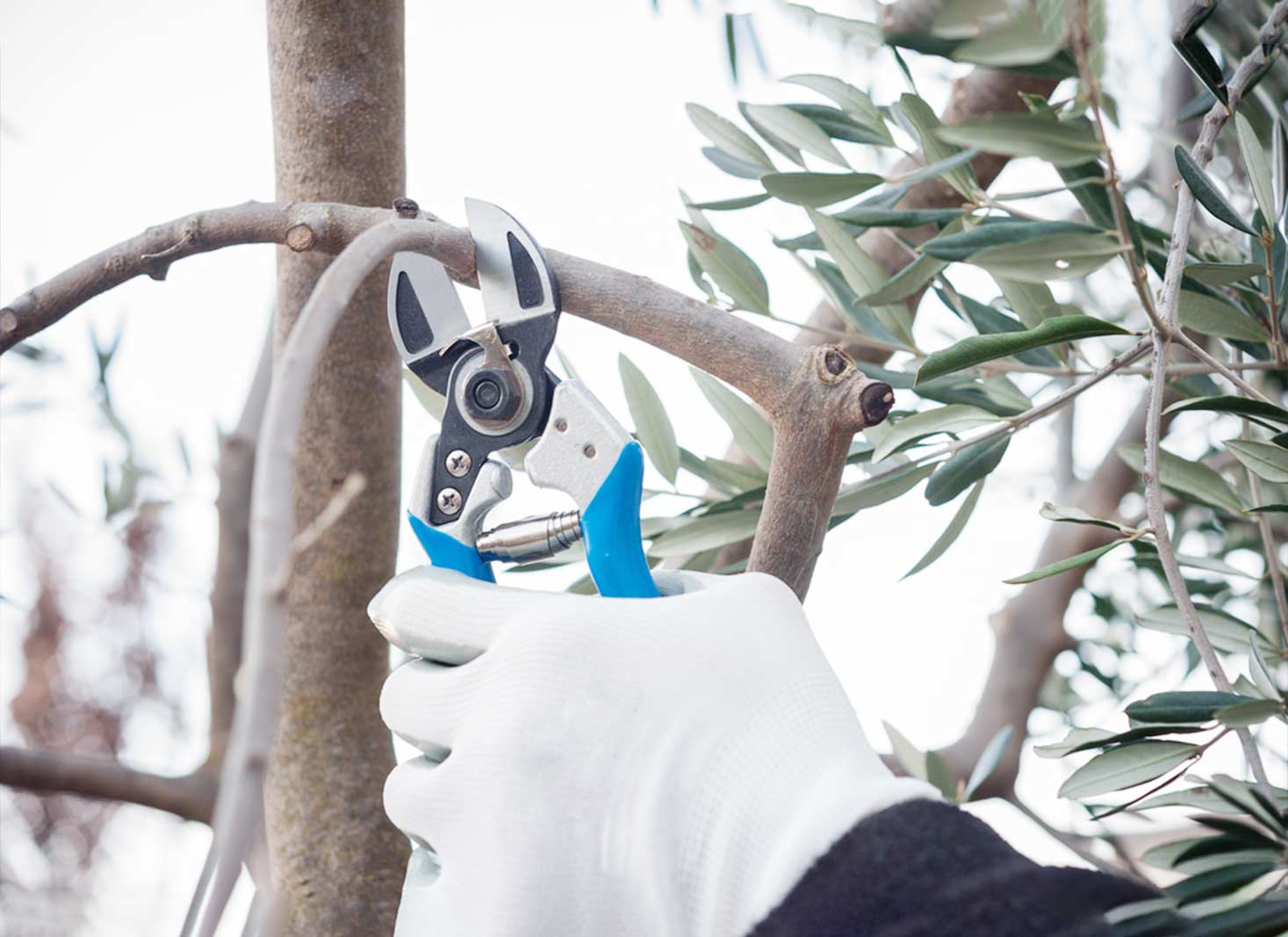
It is essential to use proper pruning techniques3 for the well-being of your olive tree and also to improve its fruit production. Here we are discussing three distinct methods: open center, maintenance, and rejuvenation pruning.
These approaches promote enhanced sunlight penetration & air circulation as well as eradicate any dead or unhealthy branches respectively.
Open center pruning
Open-center pruning is a great way to make sure your tree gets enough sunlight and air circulation so it can produce more fruit.
By trimming away the center branches, you will see the improved health of the tree as well as its shape becomes more appealing and desirable. This type of pruning offers many benefits such as better overall vigor and increased harvest yields from your beloved trees! What’s more, the pruned olive tree branches can be used as firewood or shredded to be used as compost.
With open-center pruning techniques regularly applied, you are guaranteed a stronger trunk with plentiful fruits2 ready for picking come season time.
Maintenance pruning
It is of utmost importance to maintain pruning in order to sustain your olive tree’s shape, size, and good health.
This technique entails taking away dead or sick branches, any weak limbs that may prevent the development of the tree, as well as suckers which should be removed without exception.
Regular maintenance pruning guarantees that your olive trees grow healthy, strong, and disease-free, with their potential maximized, ultimately providing a plentiful harvest.
Rejuvenation pruning
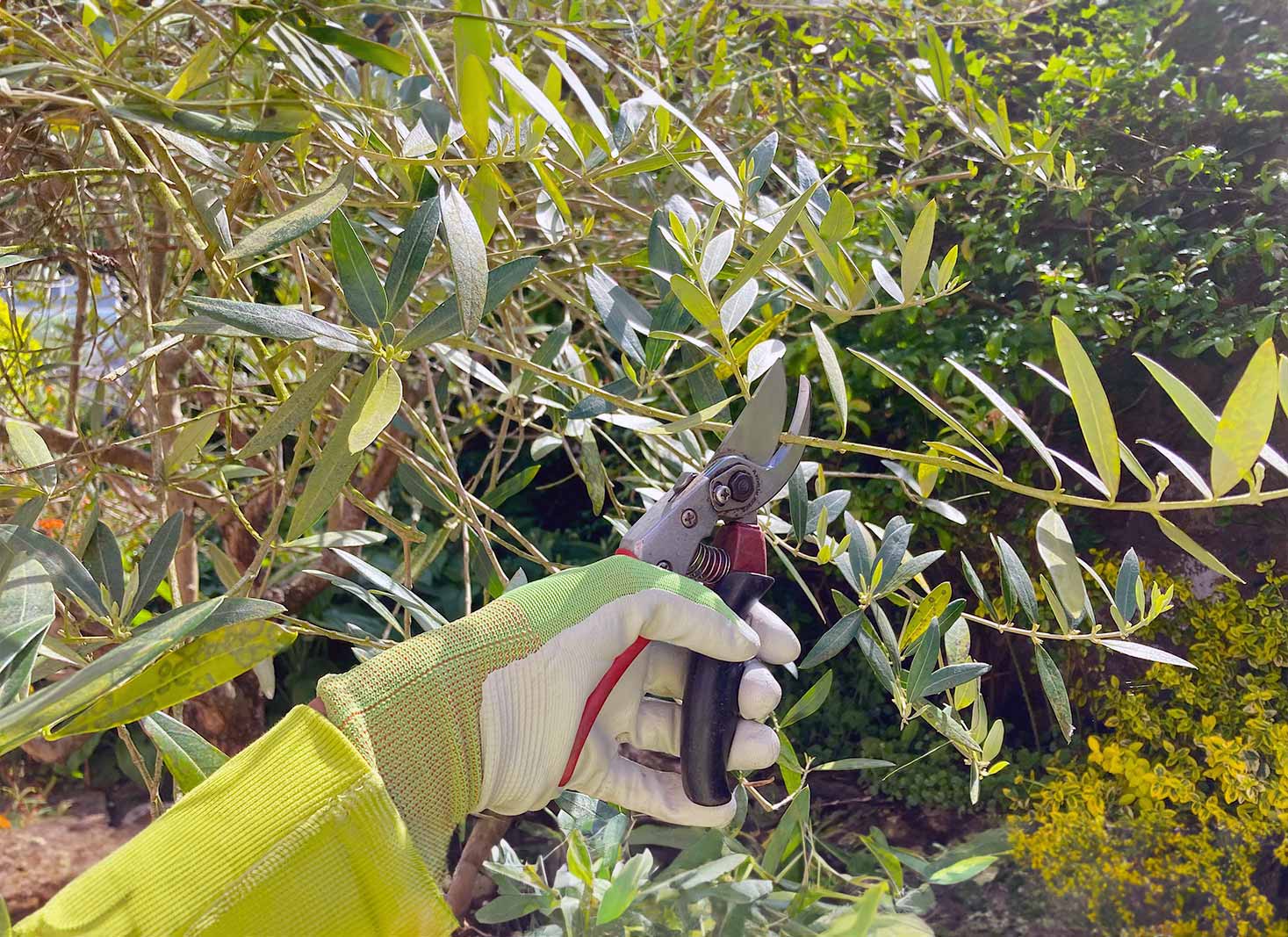
Rejuvenation pruning is a technique that breathes life into neglected or overgrown olive trees by promoting the development of healthier, new branches and stimulating growth while encouraging the tree to produce fruit.
This can be achieved by carefully cutting back their branches to between 6 and 24 inches with sharp tools for optimal results.
The benefits of taking this approach are plentiful. It rejuvenates tired-out trees, perfects their physical shape, adds overall strength to them as well as boosts fruit yield in general, all contributing to strong tree health going forward!
Essential pruning tools and preparation
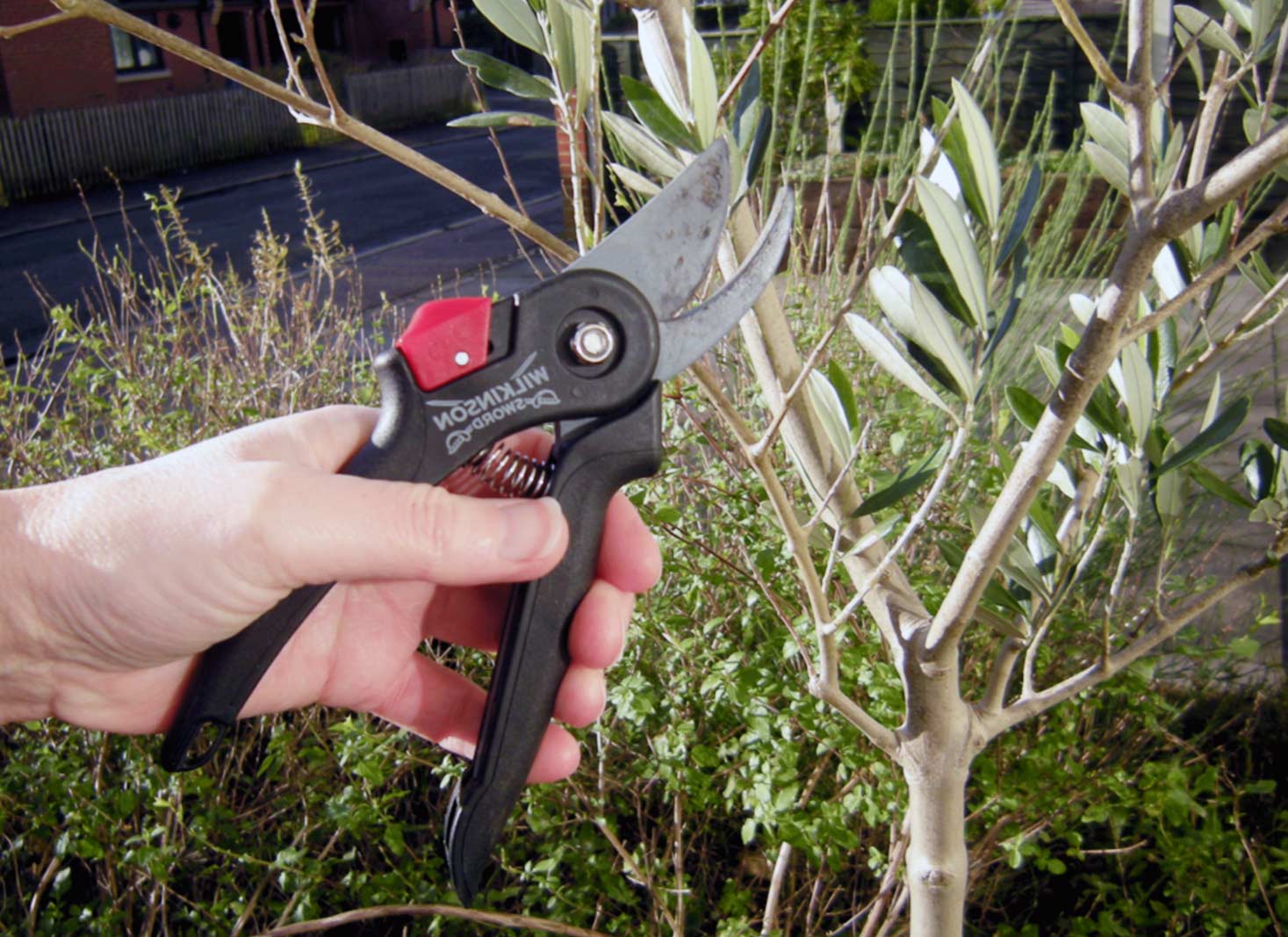
Choosing the right tools
The key to effective and safe pruning of your olive tree is selecting the right tools. Pruning shears should be employed for cutting shoots smaller than 3/4 inches in diameter, close to the branch end if possible.
Whereas 1-2 inch cuts with removal of excess length leaving a small nub where the shoot was attached are best suited for longer twigs that exceed 12 inches.
Investing in high-quality equipment pays dividends over time since it boosts efficiency while also preventing disease transmission thereby keeping trees vigorous and productive.
Cleaning and sharpening
Before you begin pruning your olive trees, it is essential to ensure that your tools are clean and sharp. This will prevent the spread of infection between plants by making sure cuts are accurate and precise.
To disinfect them, immerse in either a 70% alcohol or 10% bleach solution for 5-10 minutes then sharpen them with either file or stone so they remain in their best condition when tackling any tree-cutting projects.
Once ready to go, now learn about the different ways of successfully caring for healthy olives through the pruning techniques required such as:
- Thinning out old branches, heading back topiary shapes if desired, training young fruits like shaping a spiral pattern on its trunk; or
- Deadheading off flowers before going onto the fruit stage among other steps necessary during the annual maintenance schedule.
Now equipped with the tips mentioned above along with preparation & knowledge regarding proper upkeep, you’ll be able to maximize gains made from careful cultivation over time!
The ideal time to prune olive trees
It is essential to determine the right time to trim your olive tree for its well-being and development. When precisely pruning should be done depends on the age, growth stage, and seasonal aspects of the tree.
As a general guide, though, it is suggested that olives are cut during early springtime.
You have to take into account how old or mature your individual trees may be when deciding upon their required prune schedule.
Weather patterns such as frost can also decide the ideal timing for clipping them back too. Let’s investigate these elements more thoroughly now.
Young olive trees
When caring for young olive trees, it is important to cut out any competing branches that are emerging from the center of its crown. Shorten or remove intersecting crossing branches as well.
Do not attempt pruning in a newly transplanted tree’s first year, but instead, wait until either the second or third year before making any cuts.
Doing so will give your little tree an optimal opportunity to thrive and become strong enough over time to bear healthy fruit throughout the many seasons ahead of you.
Mature olive trees
For mature olive trees, an annual pruning is essential for optimal health and productivity.
Through proper pruning techniques, you can help the tree keep a balance between growth and fruit production by removing dead olive branches as well as enhancing the fruit yield.
Pruning regularly will also make sure your olive tree remains healthy throughout its lifespan.
Seasonal considerations
When it comes to taking care of your olive tree, pruning during the late winter or early spring months is essential. Doing so can help reduce frost damage and support new growth for a healthy and strong tree throughout the year.
Avoiding any trimming when temperatures are freezing or if there’s potential of a frost in upcoming days should also be taken into consideration, as this may cause harm to your beloved plant.
Pruning olive trees in pots
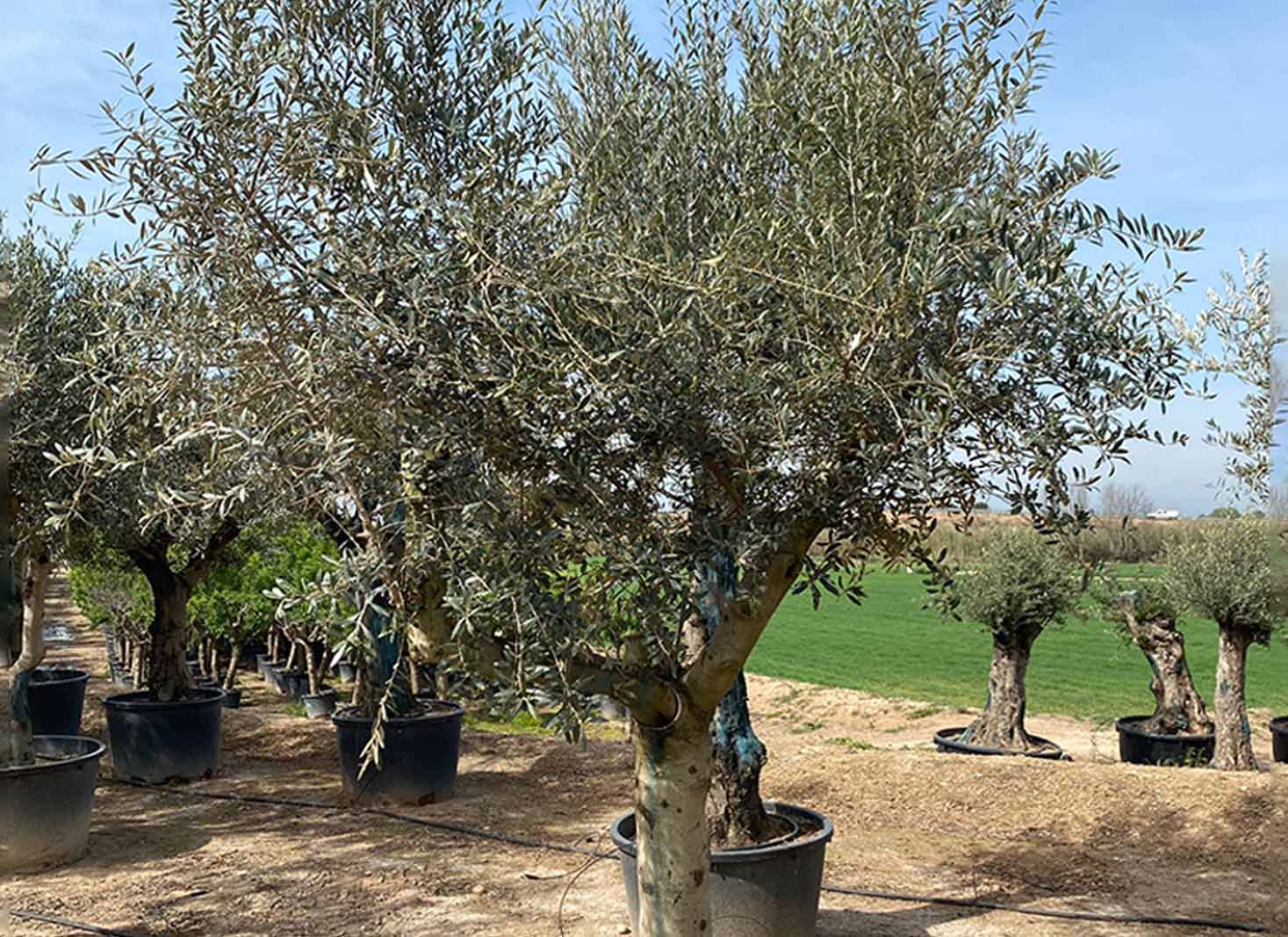
The maintenance of potted olive trees is important for achieving optimal health and abundant fruits. To ensure the success of these plants, particular attention must be given to their pot size, root care, and pruning steps that follow once trimmed.
These simple tips, when applied correctly, will help your tree reach its fullest potential with lush foliage and a plentiful harvest.
Choosing the right container and caring properly for roots are two essential aspects of keeping your potted olives happy and healthy enough to bear fruit!
Container size and root care
When pruning olive trees, selecting an adequate container size is essential. The right pot to use depends on the height of your tree. 16-20-inch deep planters are commonly suitable for regular nursery olive trees.
It’s recommended that you opt for a vessel that can fit at least two times the extent of its root ball and by doing this, you guarantee optimal health and high productivity in your potted olives.
Pruning steps for potted trees
When it comes to pruning potted olive trees, necessary steps include removing diseased or deceased branches, trimming any root suckers and water shoots to get rid of crossing branches.
A third of the tree can be cut off as long as you are aware when enough is enough. To ensure their size and maintain a desired look for your olives, consider “tipping” them, which also helps keep these plants robust and productive.
By following correct procedures while pruning, one can guarantee that they will have healthy strong potted olive trees throughout time!
Post-pruning care
Caring for your potted olive tree after pruning is just as essential as the actual process of cutting back. It’s recommended to provide hydration and apply fertilizer post-pruning.
It’s important to watch out for any indications of distress or illness over time in order to guarantee its healthiness and wellness. With correct care after pruning, it will continue to develop happily throughout many years ahead.
Shaping your olive tree
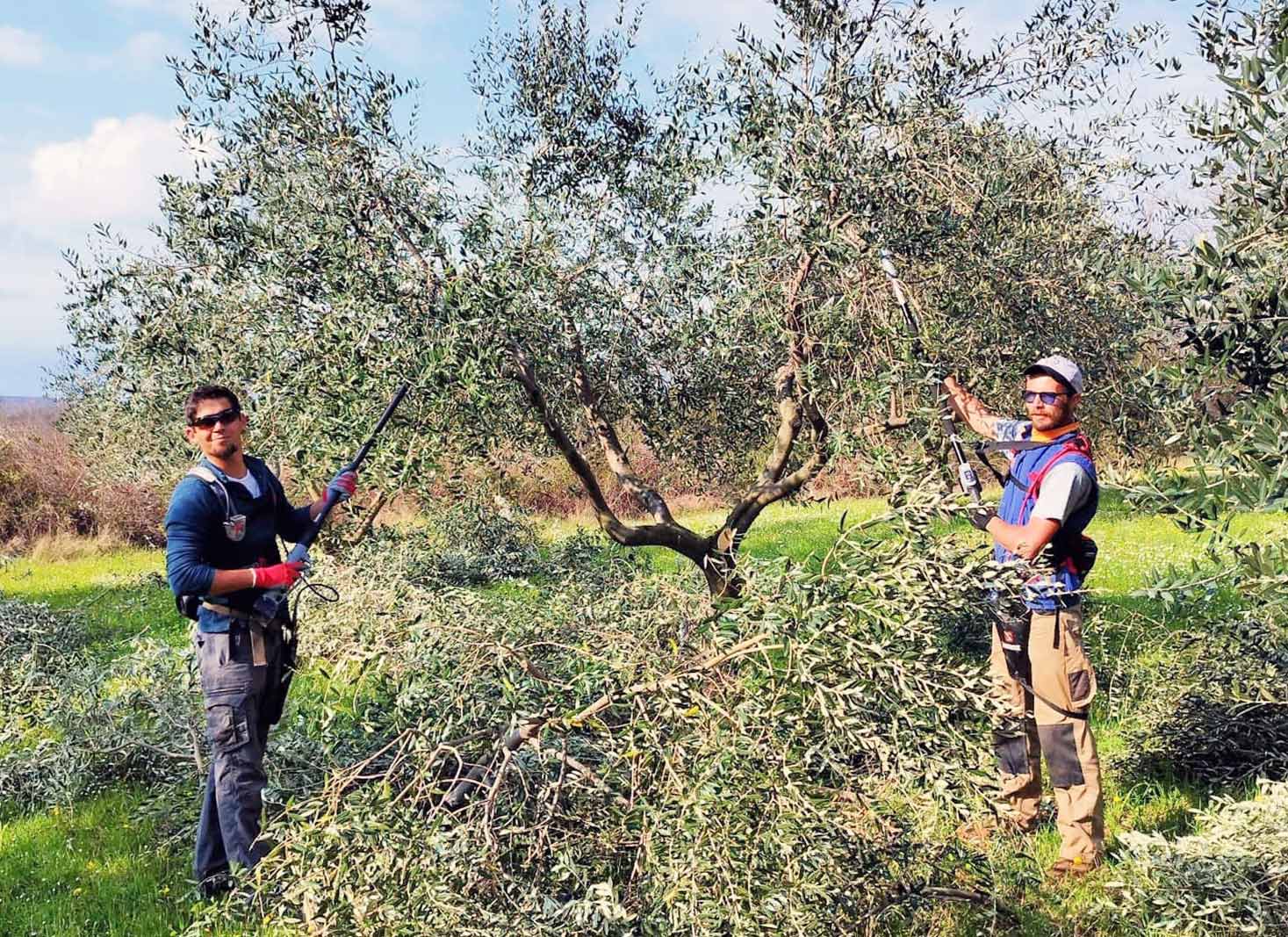
When it comes to styling your olive tree, you have quite a few choices. Whether opting for an aesthetic topiary style or allowing the branches of the tree to follow their natural course is up to you.
This part will examine all possible ways that you can prune and form your olive trees so they give both fruit in abundance but also add exquisite charm to any landscaping project or garden layout.
Topiary style
To create a topiary look for your olive tree, pruning, and sculpting techniques should be employed.
Clipping around the leaves of the tree is important to maintain its shape as desired while making sure that cuts are angled slightly above buds or side shoots in order to promote new growth.
With patience and dedication, you can cultivate an alluring art piece right within your garden space that delivers both beauty and pleasure with its unique presence.
Natural growth
If you would like your olive tree to have a wild and untamed appearance, light pruning is an effective way of achieving this. This approach will allow the tree to grow naturally with little intervention from you.
Embrace this natural beauty that nature has provided by allowing the growth pattern and form on its own, something that can provide great aesthetic value for any garden or outdoor space.
FAQ's
It is best to prune an olive tree in late spring or early summer when its flower buds begin to open. This gives it plenty of time for recovery before colder weather arrives and any pruning cuts become vulnerable.
For optimal results, you should consider trimming your olive trees during this period.
To maintain optimal health, trim your olive tree annually. Begin by cutting off any dead branches and the weak shoots that are growing straight up to encourage more sunlight absorption as well as improved air circulation.
Utilize a lopper for removing suckers from the trunk’s base while shaping all of the limbs into an elegant V-shape “martini glass” silhouette, this ensures you have a neat-looking symmetrical form on top of its essential care benefits.
Be sure to carry out pruning in late winter before new buds sprout forth so it can be free from coming obstructions later down the road during growth season.
To prune and shape an olive tree, one needs to have the right tools as well as safety equipment. The process requires cutting away on all sides of the tree from its base up until a cup-shaped form with three or four main branches is achieved.
It is imperative that any dead, diseased or damaged limbs be removed while also making sure sunlight can penetrate through them for better health and growth.
To prune a leggy olive tree, start by cutting back the long shoots by half or two-thirds in late winter to early spring. Then remove any dead or weak growth and branches that cross or conflict.
To create a “martini glass” V-shape, trim the branches and leave gaps so sunlight can reach the middle of the tree. Prune once a year before buds appear.
- Petar Dz, (2024) How To Prune Olive Trees: Step by Step Guide. <https://oliveknowledge.com/how-to-prune-olive-trees/> Accessed: 05-03-2024
- Paul Vossen, (2019) Ten Basics of When And How to Prune Fruit Trees. <https://cesonoma.ucanr.edu/files/27164.pdf> Accessed: 05-03-2024
- University of Maryland Extension, (2023) Pruning Trees in the Home Landscape. <https://extension.umd.edu/resource/pruning-trees-home-landscape/> Accessed: 05-03-2024












